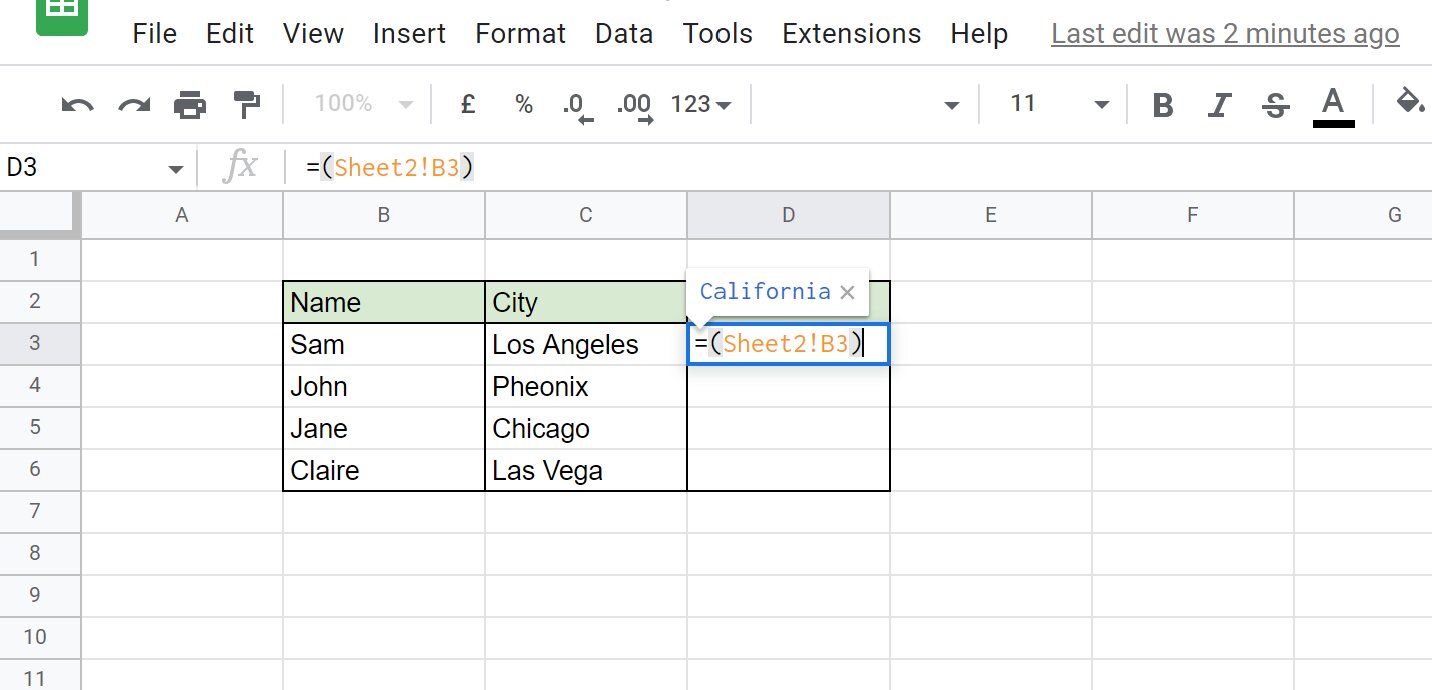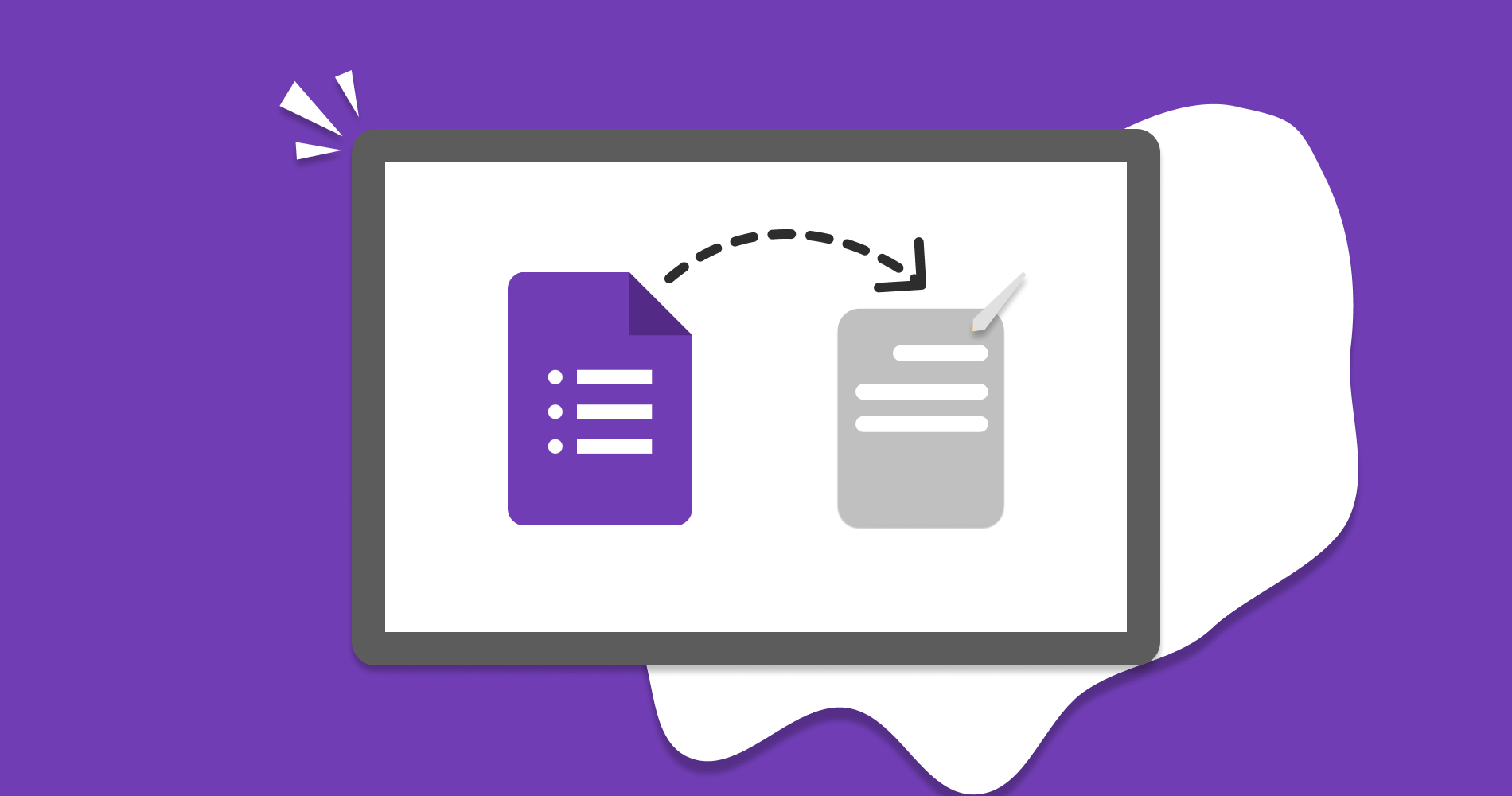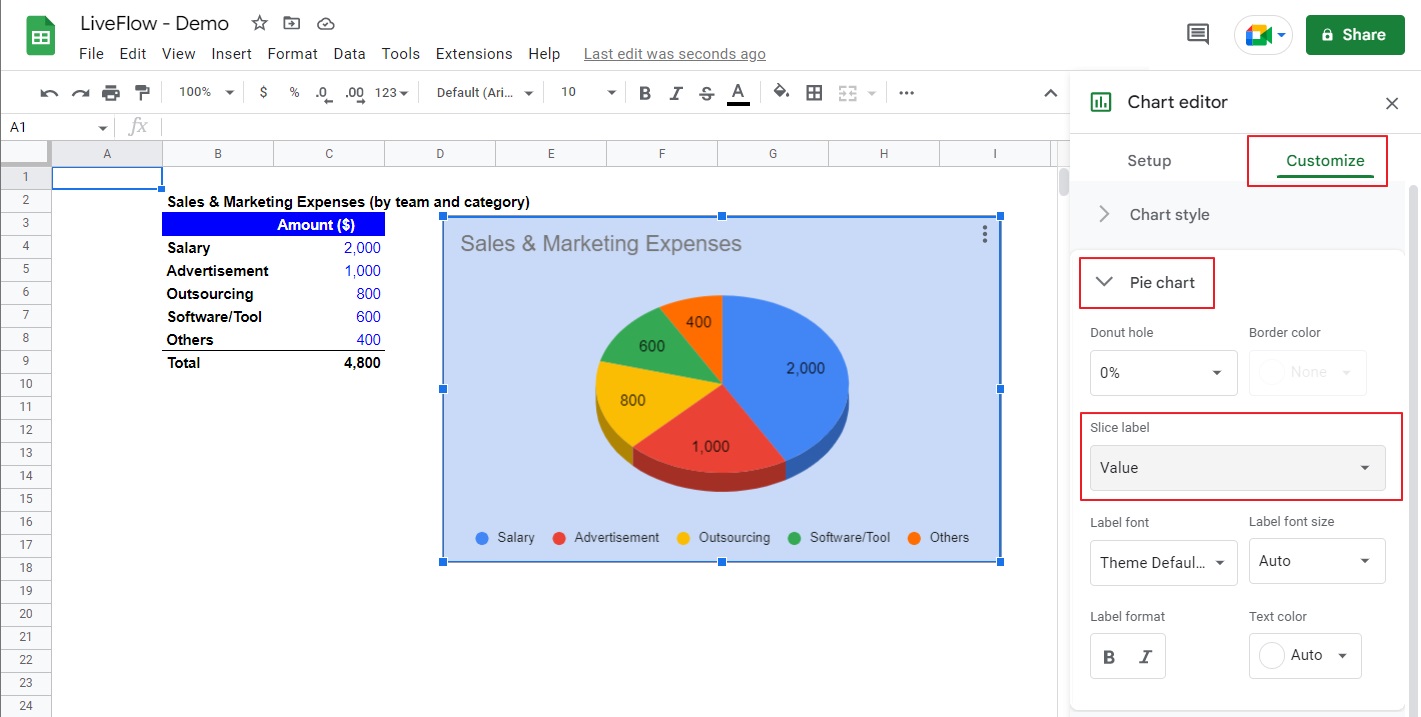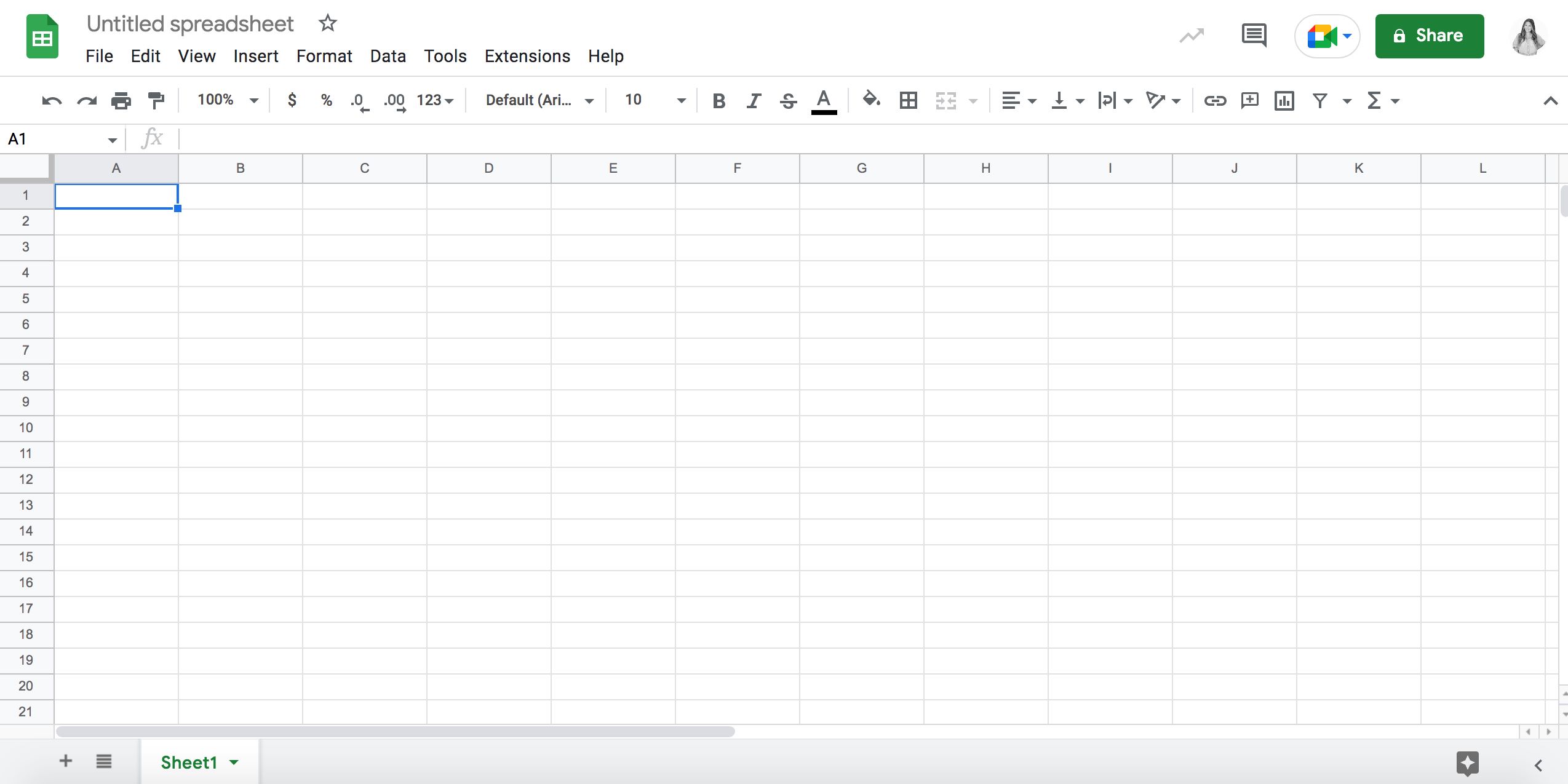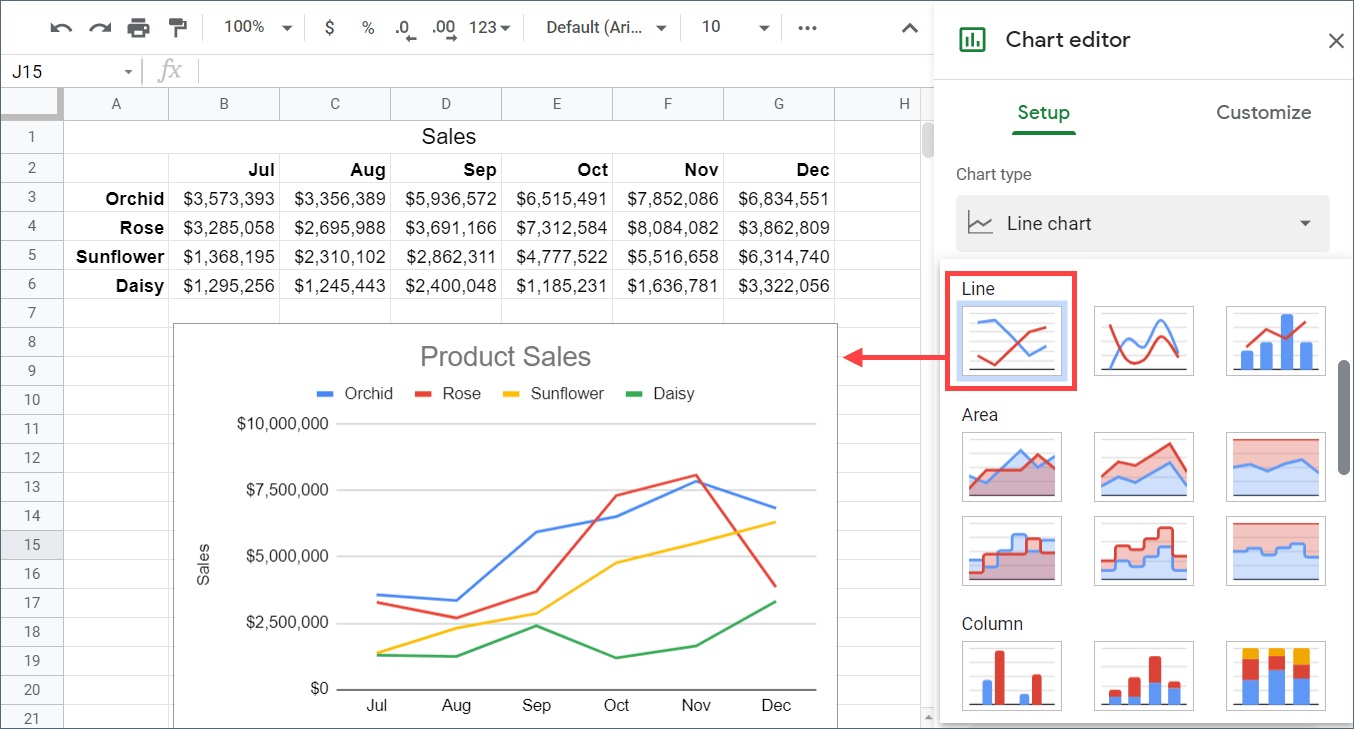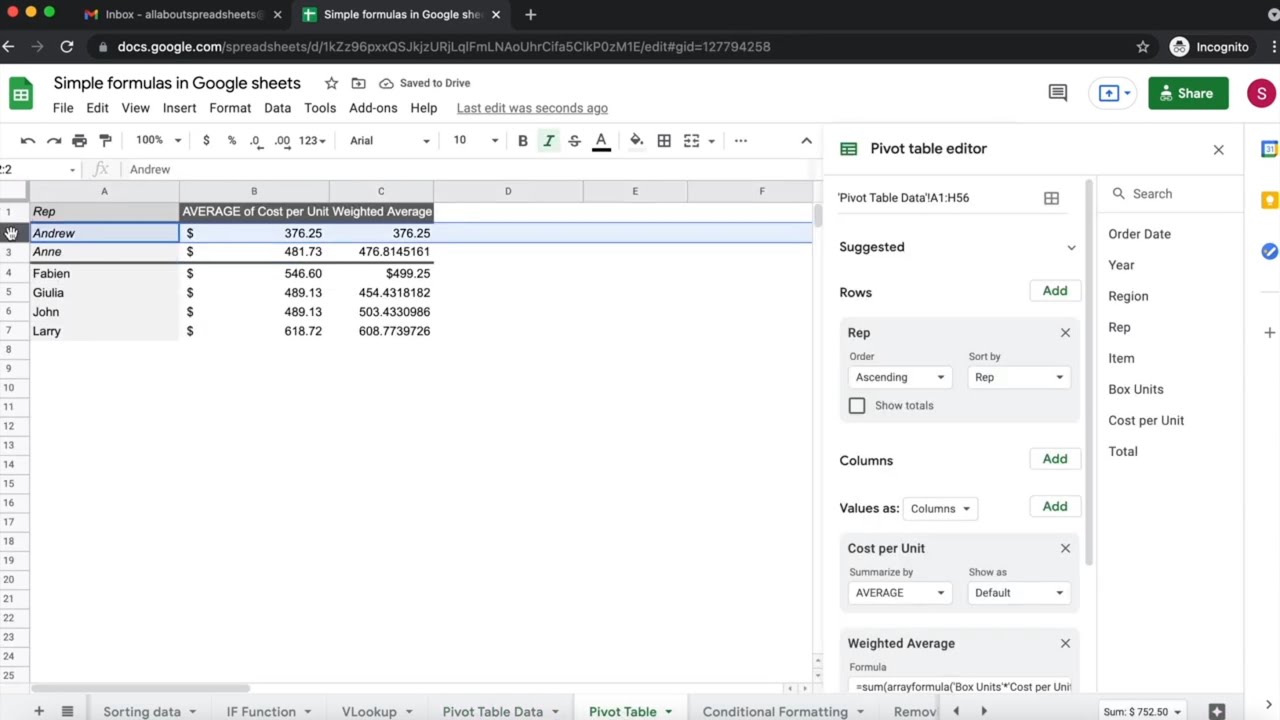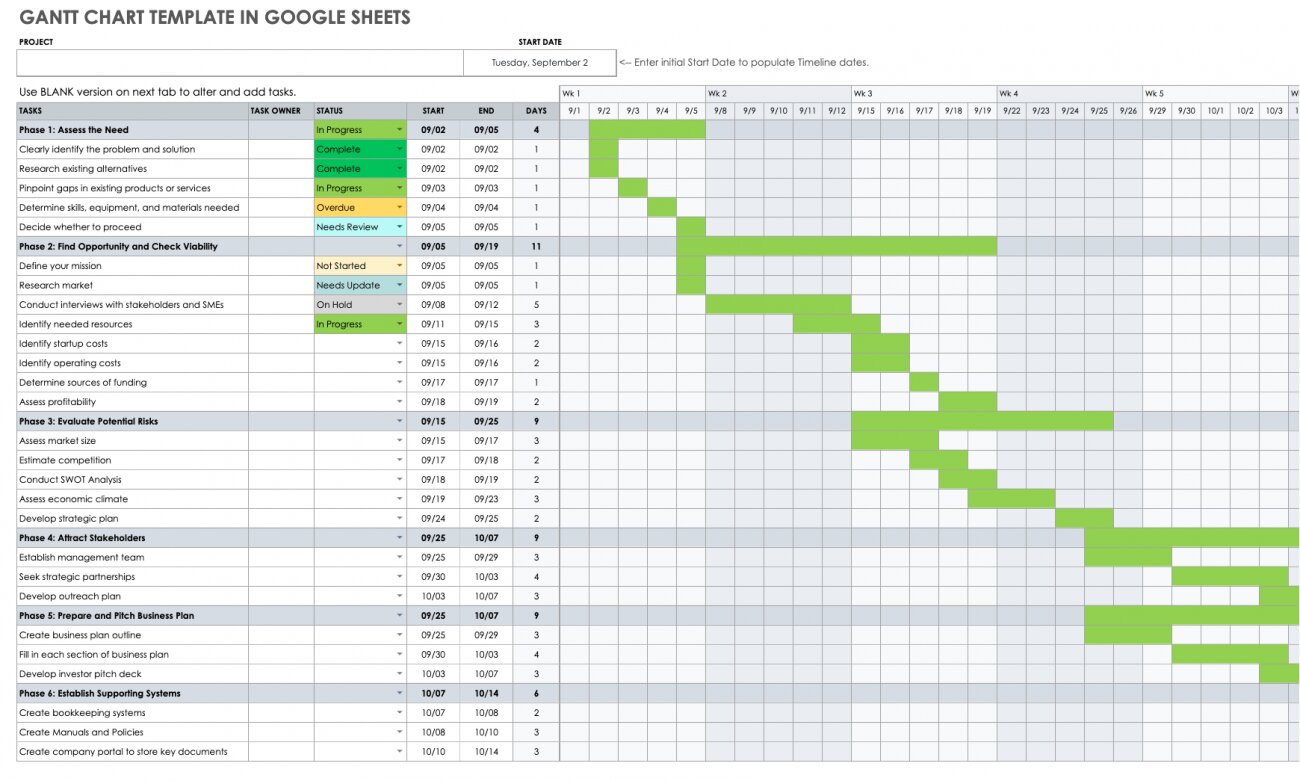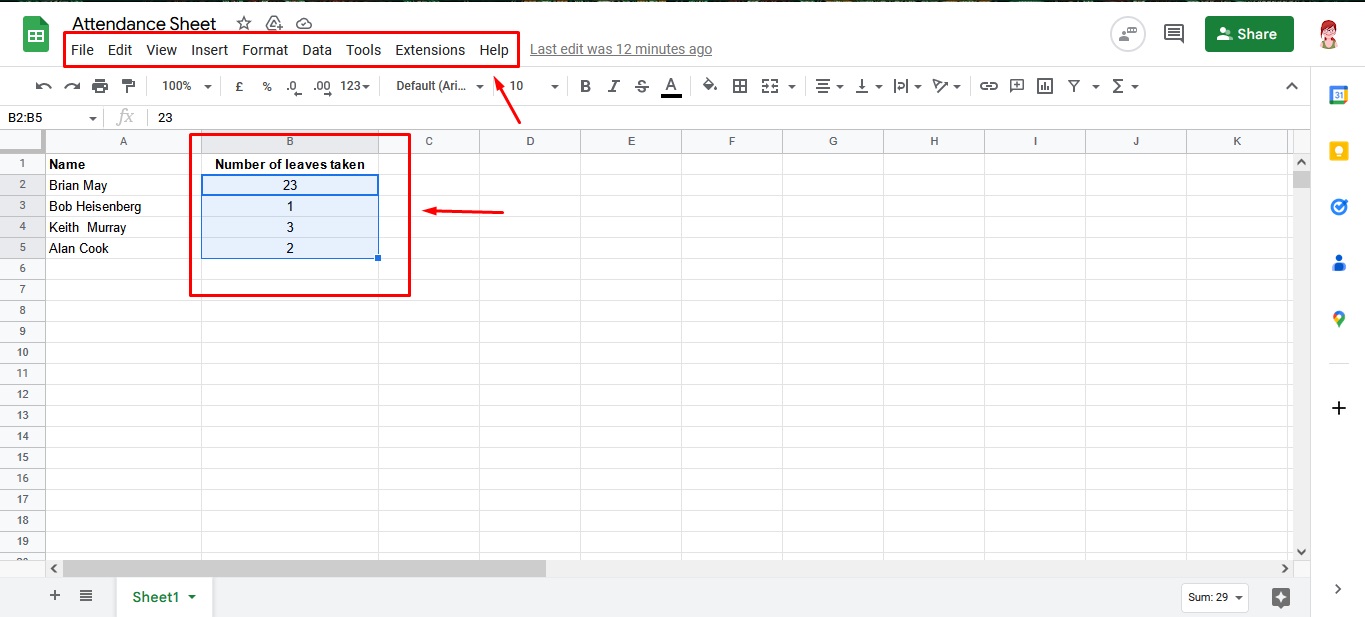Introduction
Google Sheets is a powerful tool for organizing and analyzing data, and one of its key features is the ability to link sheets. Linking sheets allows you to create dynamic connections between different sheets and even different spreadsheets. This functionality enables you to consolidate data, create interactive dashboards, collaborate with others, and more.
In this article, we will explore the various aspects of linking sheets in Google Sheets and how it can enhance your data management experience. Whether you’re a data analyst, a project manager, or simply someone who deals with spreadsheets on a regular basis, understanding how to link sheets can save you time, streamline your workflow, and provide valuable insights.
We will start by explaining the basics of linking sheets within the same spreadsheet. This includes understanding the different types of cell references and using them to reference data between sheets. Then, we will move on to linking multiple sheets from different spreadsheets, allowing you to combine and analyze data from various sources.
Furthermore, we will discuss how to link sheets to consolidate data. This technique enables you to gather information from different sheets and summarize it in a single sheet, making it easier to analyze and visualize. Additionally, we will delve into linking sheets to create interactive dashboards, giving you the ability to present your data in a visually appealing and user-friendly manner.
Collaboration is another benefit of linking sheets. We will explore how you can link sheets to share data with colleagues, allowing multiple users to work on and update the same set of data simultaneously. This promotes real-time collaboration and ensures everyone is working with the most up-to-date information.
Lastly, we will touch on common issues that may arise while linking sheets and provide troubleshooting tips to overcome these challenges. Knowing how to troubleshoot ensures a smooth and seamless linking experience.
By the end of this article, you will have a comprehensive understanding of linking sheets in Google Sheets and how to leverage this feature to enhance your data management capabilities. So, let’s dive in and discover the power of linking sheets in Google Sheets!
Understanding Linking in Google Sheets
Before we delve into the intricacies of linking sheets in Google Sheets, it’s important to understand the concept of linking itself. Linking sheets allows you to establish connections between different sheets within the same spreadsheet or across multiple spreadsheets. These connections enable you to dynamically reference and display data from one sheet to another.
In Google Sheets, there are two key methods used for linking sheets: cell references and importrange function.
Cell references are the most basic form of linking sheets. By using cell references, you can reference a specific cell or range of cells in one sheet and display that data in another sheet. There are two types of cell references commonly used: relative references and absolute references.
A relative cell reference adjusts when you copy or move it to a different location within the same sheet or to another sheet. For example, if you reference cell A1 in Sheet1 and copy the formula to Sheet2, the reference will automatically adjust to B1 in Sheet2.
On the other hand, an absolute cell reference remains fixed regardless of where it is copied or moved. To create an absolute reference, you can use the dollar sign ($) before the column and/or row reference. For instance, if you reference $A$1 in Sheet1 and copy the formula to Sheet2, the reference will stay as $A$1 in Sheet2.
The importrange function, on the other hand, allows you to link and import data from one sheet to another, even if they are in different spreadsheets. This function is particularly useful when you want to consolidate data from multiple sources into a single sheet or analyze data from different team members.
By using the importrange function, you can specify the URL of the source spreadsheet and the range of cells you want to import. The data from the source sheet will be imported into the destination sheet, creating a connection that updates in real-time. It’s important to note that you need to have the necessary permissions to access the source spreadsheet in order to use importrange.
Understanding the different methods of linking sheets in Google Sheets lays the foundation for leveraging this powerful feature to organize, analyze, and visualize your data. In the next sections, we will explore the practical applications of linking sheets and how they can enhance your data management experience.
How to Link Sheets Within the Same Spreadsheet
Linking sheets within the same spreadsheet in Google Sheets allows you to establish connections and display data from one sheet to another, making it easier to organize and analyze your data. Let’s explore the step-by-step process of linking sheets within the same spreadsheet.
- To begin, open the spreadsheet in Google Sheets that contains the sheets you want to link.
- Select the destination sheet where you want to display the linked data.
- In the destination sheet, click on the cell where you want the linked data to appear.
- Type an equal sign (=) in the cell to indicate that you are entering a formula.
- Depending on your specific linking requirements, use either a cell reference or a function.
If you want to link a specific cell or range of cells from a different sheet in the same spreadsheet, you can use a cell reference. Simply enter the sheet name followed by an exclamation mark (!), and then the cell reference. For example, if you want to link to cell A1 in the “Sheet2”, you would enter “Sheet2!A1” as the cell reference in the formula.
Furthermore, you can apply various functions to manipulate the data being linked. Functions such as SUM, AVERAGE, and COUNT allow you to perform calculations on the linked data. To use a function, enter the function name followed by an opening parenthesis, then the cell reference or range of cells, and close the parenthesis. For example, if you want to calculate the sum of values in cells A1 to A10 in “Sheet2”, you would enter “=SUM(Sheet2!A1:A10)” in the destination sheet.
Once you have entered the cell reference or function, press Enter to finalize the formula. The linked data will now appear in the destination cell, reflecting any changes that occur in the source sheet. If the data in the source sheet is modified or updated, the linked data in the destination sheet will automatically update as well.
By linking sheets within the same spreadsheet, you can create dynamic connections that provide real-time updates and streamline your data management process. Whether you’re consolidating data from multiple sheets or performing calculations on linked data, this feature enables you to organize and analyze your data more efficiently.
How to Link Multiple Sheets from Different Spreadsheets
Linking multiple sheets from different spreadsheets in Google Sheets allows you to combine and analyze data from various sources, providing a comprehensive and centralized view of your information. Let’s explore the step-by-step process of linking multiple sheets from different spreadsheets.
- To start, open the destination spreadsheet where you want to bring in the data from the source spreadsheets.
- Select the sheet in the destination spreadsheet where you want to display the linked data.
- In the destination sheet, click on the cell where you want the linked data to appear.
- Type an equal sign (=) in the cell to indicate that you are entering a formula.
- Use the importrange function to link the sheets from the different spreadsheets.
- Inside the importrange function, specify the URL of the source spreadsheet in double quotation marks. Make sure you have the necessary permissions to access the source spreadsheet.
- After the URL, enter a comma (,) followed by the range of cells you want to import from the source sheet. For example, if you want to import cells A1 to D10 from the source sheet, you would enter “Sheet1!A1:D10” as the range in the importrange function.
The complete formula should look something like this: “=importrange(“URL”, “Sheet1!A1:D10″)”.
Once you have entered the importrange formula, press Enter to finalize it. Google Sheets will prompt you to grant access to the source spreadsheet the first time you use importrange. Follow the instructions to authorize the connection between the source and destination spreadsheets.
Once authorized, the linked data from the source spreadsheet will appear in the destination sheet. The data will update in real-time, reflecting any changes or additions made in the source sheet. Any modifications made to the source sheet, such as editing values or adding/removing rows and columns, will be automatically reflected in the destination sheet.
By linking multiple sheets from different spreadsheets, you can consolidate data from various sources and analyze it in one central location. This feature is particularly useful when collaborating with team members or when working with data from different departments or projects.
With the importrange function, you have the flexibility to bring in specific ranges of data, allowing you to focus on the information that is most relevant to your analysis. By centralizing and linking your data, you can gain valuable insights and make informed decisions based on a comprehensive view of your information.
Linking Sheets to Consolidate Data
Linking sheets in Google Sheets is a powerful method for consolidating data from multiple sources into a single sheet, making it easier to analyze and manage your information. Let’s explore how you can use this feature to consolidate data and streamline your data management process.
To begin, identify the sheets that contain the data you want to consolidate. These sheets can be within the same spreadsheet or different spreadsheets. For each sheet, determine the specific data range you want to include in the consolidation.
In your destination sheet, select the cell where you want the consolidated data to appear. Type an equal sign (=) to indicate that you are entering a formula. Here, you can use different methods to consolidate your data:
Using Cell References:
If the sheets you want to consolidate are within the same spreadsheet, you can use cell references to directly connect and display the desired data in the destination sheet. Simply reference the specific cell or range of cells from each sheet in the formula. For example, if you want to consolidate the data in cell A1 from “Sheet1” and cell B1 from “Sheet2”, your formula would look like this: “=Sheet1!A1 + Sheet2!B1”.
Using Importrange:
If the sheets you want to consolidate are in different spreadsheets, you can use the importrange function we discussed earlier. This function allows you to bring in data from different spreadsheets into your destination sheet. Following the steps mentioned in the previous section, use the importrange function to specify the URL of the source spreadsheet and the range of cells you want to import. Repeat this for each sheet you want to include in the consolidation. For example: “=importrange(“URL1”, “Sheet1!A1:C10”) + importrange(“URL2”, “Sheet2!A1:C10″)”.
Once you have entered the formula, press Enter to finalize it. The linked data from each source sheet will now appear in the destination sheet, creating a consolidated view of the data. Any changes made in the source sheets, such as adding or editing data, will automatically update in the destination sheet, keeping your consolidated data up-to-date.
Linking sheets to consolidate data is especially useful when you have data spread across different sheets or files. It allows you to bring all the relevant information together in one place, simplifying your analysis and saving time by eliminating the need to manually copy and paste data.
Additionally, by consolidating your data, you can easily create charts, pivot tables, and other visualizations to gain insights and make data-driven decisions. With a consolidated view of your data, you can identify trends, spot anomalies, and compare information across different sources.
By leveraging the power of linking sheets to consolidate data, you can streamline your data management process and unlock the full potential of your data in Google Sheets.
Linking Sheets to Create Interactive Dashboards
One of the powerful applications of linking sheets in Google Sheets is the ability to create interactive dashboards. By linking sheets and utilizing various data visualization techniques, you can transform your data into dynamic and visually appealing dashboards that provide real-time insights. Let’s explore how you can link sheets to create interactive dashboards.
The first step is to determine the specific data you want to include in your dashboard. This may involve data from multiple sheets within the same spreadsheet or data from different spreadsheets. Identify the relevant ranges of data that you want to display in your dashboard.
In your destination sheet, set up the layout of your dashboard. This can include charts, tables, pivot tables, and other data visualization elements. Decide how you want to present and analyze your data to achieve your desired insights.
Next, link the data from the source sheets to your dashboard. You can use cell references or the importrange function, depending on whether the source sheets are within the same spreadsheet or different spreadsheets.
If the source sheets are within the same spreadsheet, use cell references to directly connect the data to your dashboard. Simply reference the specific cells or ranges in your formula. For example, if you want to display the data in cell A1 from “Sheet1” in your dashboard, your formula would look like this: “=Sheet1!A1”. Repeat this process for each cell or range you want to display.
If the source sheets are in different spreadsheets, use the importrange function to import the desired data into your dashboard. Follow the steps mentioned earlier, specifying the URL of the source spreadsheet and the range of cells you want to import. Repeat this for each sheet you want to include in your dashboard. For example: “=importrange(“URL1”, “Sheet1!A1:C10”) + importrange(“URL2”, “Sheet2!A1:C10″)”.
As you link the data to your dashboard, it will dynamically update whenever changes are made in the source sheets. This ensures that your dashboard always reflects the most up-to-date information.
To enhance interactivity and provide a more user-friendly experience, consider adding interactive elements to your dashboard. This can include drop-down menus, checkboxes, or slicers, which allow users to filter and analyze the data based on specific criteria.
By linking sheets to create interactive dashboards, you can unlock the full potential of your data and gain meaningful insights at a glance. Whether you’re tracking project progress, monitoring sales performance, or analyzing marketing metrics, interactive dashboards provide a visually engaging and efficient way to understand your data.
Through the power of linking sheets and data visualization, you can present complex information in a simplified and actionable format, empowering yourself and others to make data-driven decisions.
Linking Sheets for Collaboration and Data Sharing
Linking sheets in Google Sheets is not only useful for organizing and analyzing data but also for collaboration and data sharing among teams. By linking sheets, you can create connections that allow multiple users to work on and update the same set of data simultaneously. Let’s explore how linking sheets facilitates collaboration and data sharing.
When working on a project with multiple team members, it is common to have different individuals responsible for specific aspects of the project. With linked sheets, each member can have their own sheet to input and manage their data, while other team members can access and view this data in a centralized location.
To enable collaboration through linked sheets, start by creating a master sheet where the consolidated or shared data will be displayed. This sheet will serve as the hub where all relevant information is brought together.
Next, share the necessary permissions with team members who need access to the linked sheets. Grant them the ability to edit or view the sheets depending on their role in the project.
Using cell references or the importrange function, connect the sheets of team members to the master sheet. This allows the data entered in their individual sheets to be automatically updated in real-time in the master sheet. Any changes made in their sheets, such as adding new rows or modifying values, will be reflected instantaneously in the master sheet.
This real-time update feature ensures that everyone has access to the most up-to-date data without delays or inconsistencies. It promotes collaboration by eliminating the need for manual data sharing, reducing the chances of errors, and increasing efficiency in data management.
Additionally, linking sheets for collaboration facilitates streamlined communication among team members. Instead of constantly emailing spreadsheets back and forth or dealing with multiple versions of the same document, team members can work on their respective sheets while others can monitor the live updates in the master sheet. This creates a unified and synchronized workflow.
Linking sheets for collaboration also enhances data sharing with external stakeholders, such as clients or vendors. By selectively sharing access to specific sheets or spreadsheets, you can ensure that external parties have access to the necessary data in real-time. This eliminates the need for exporting and sharing static copies of the data and promotes transparency and accountability in data-driven decision-making.
Through linking sheets, collaboration and data sharing become seamless, allowing teams to work together efficiently, communicate effectively, and ensure data accuracy. Whether working on a project internally or sharing data externally, the power of linked sheets facilitates smooth collaboration and promotes efficient data sharing.
Troubleshooting Common Issues with Linking Sheets
While linking sheets in Google Sheets can greatly enhance your data management experience, there may be times when you encounter issues or face challenges. Understanding and troubleshooting these common issues can help ensure a smooth linking process. Let’s explore some of the common issues and their possible solutions.
1. Access Permissions:
If you are unable to link sheets or retrieve data using importrange, it might be due to insufficient access permissions. Make sure that you have the necessary permissions to access the source spreadsheet. Similarly, when collaborating with others, ensure that they have the appropriate access permissions to the sheets you want to link.
2. Incorrect Syntax:
The syntax used when linking sheets is crucial. Even a small mistake can lead to errors. Double-check your formulas to ensure that you have accurately entered the references, URLs, and sheet names. Verify that you have used the correct punctuation, such as quotation marks, commas, and exclamation marks.
3. External Data Changes:
If you are using importrange to link sheets from different spreadsheets, it’s important to note that any changes to the source data, such as altering formulas or deleting columns, can break the link or result in missing data. Ensure that the source data remains consistent and unchanged to maintain the proper functioning of linked sheets.
4. Circular References:
Be cautious of circular references when linking sheets. A circular reference occurs when a formula refers back to its own cell or indirectly refers to itself through a chain of references. This can lead to errors and incorrect calculations. Check your formulas to ensure they do not create circular references and adjust them accordingly.
5. Sheet Renaming or Moving:
If you have linked sheets using cell references and subsequently renamed or moved the sheets, the references will be broken. When renaming or moving sheets, update the references in your formulas to reflect the new sheet names or locations.
6. Spreadsheet Size Limitations:
Google Sheets has certain limitations on the size of spreadsheets, including the number of cells, rows, and columns. If you encounter issues while linking sheets, such as slow performance or incomplete imports, it may be due to the spreadsheet size reaching its limit. In such cases, consider dividing the data into smaller spreadsheets or optimizing your formulas to reduce the data size.
By addressing these common issues and following the troubleshooting tips, you can overcome obstacles and ensure the smooth functioning of linked sheets. Take the time to double-check permissions, syntax, and data changes to maintain the integrity and reliability of your linked sheets.
Conclusion
Linking sheets in Google Sheets is a powerful feature that enhances your data management capabilities. Whether you need to consolidate data, create interactive dashboards, collaborate with team members, or share data with stakeholders, linking sheets provides a seamless and efficient solution.
By understanding the different methods of linking sheets, such as using cell references and importrange, you can establish dynamic connections between sheets within the same spreadsheet or across multiple spreadsheets. This allows you to easily reference and display data, ensuring that your information is up-to-date and synchronized.
Linking sheets not only streamlines your data management process but also enables you to gain valuable insights from your data. By consolidating data from various sources, creating interactive dashboards, and collaborating with others, you can make data-driven decisions and unlock the full potential of your data.
When working with linked sheets, it’s important to troubleshoot common issues such as access permissions, syntax errors, and circular references. By identifying and addressing these challenges, you can ensure a smooth linking experience and maintain the integrity of your linked sheets.
In conclusion, linking sheets in Google Sheets opens doors to improved data organization, analysis, collaboration, and data sharing. Experiment with different linking methods, explore advanced formulas and functions, and leverage data visualization techniques to craft powerful dashboards. With the right approach and understanding, you can harness the power of linked sheets to transform your data into valuable insights and drive better decisions.







